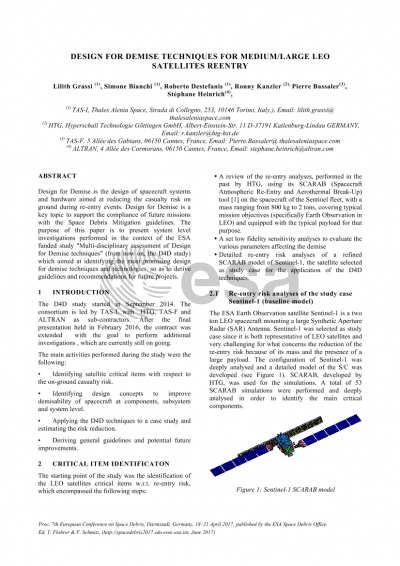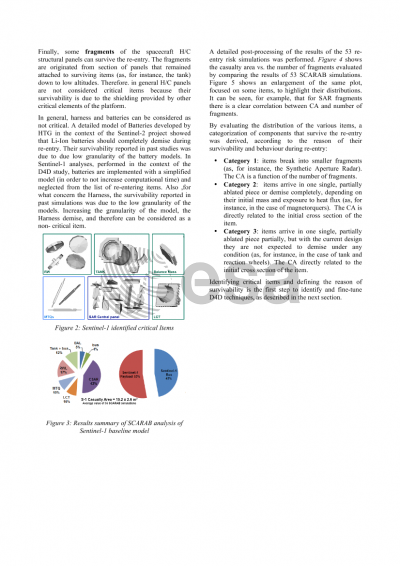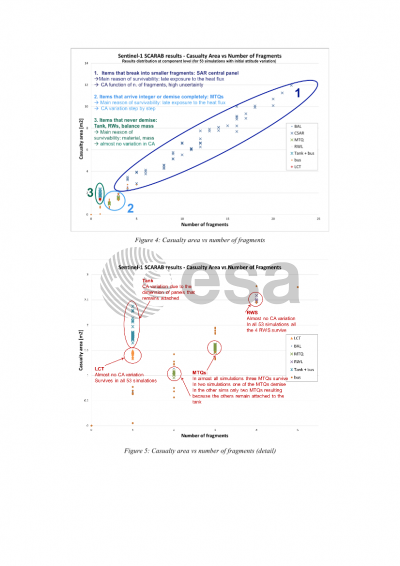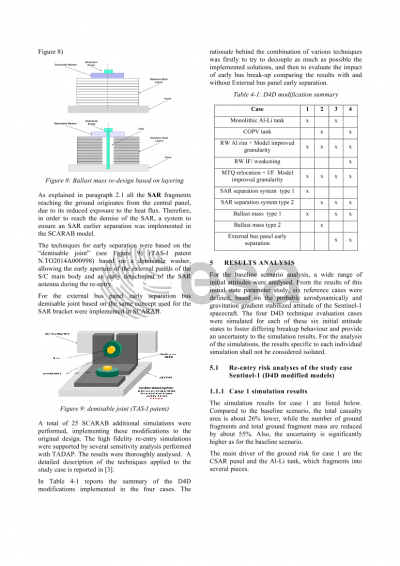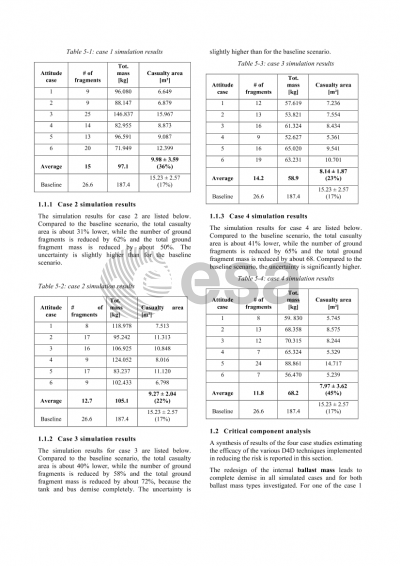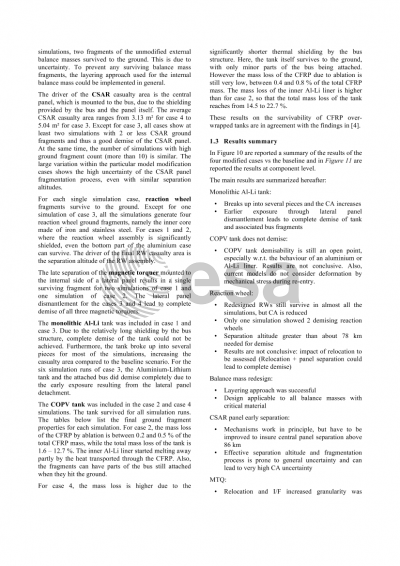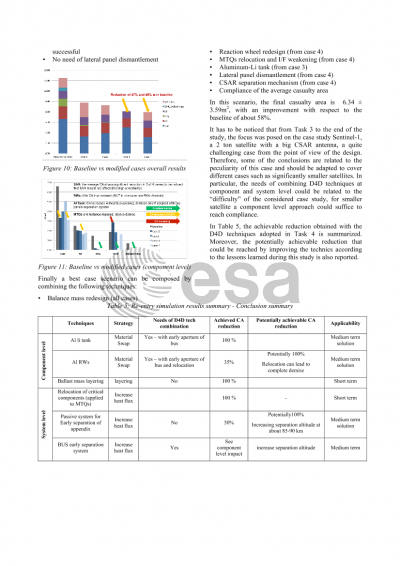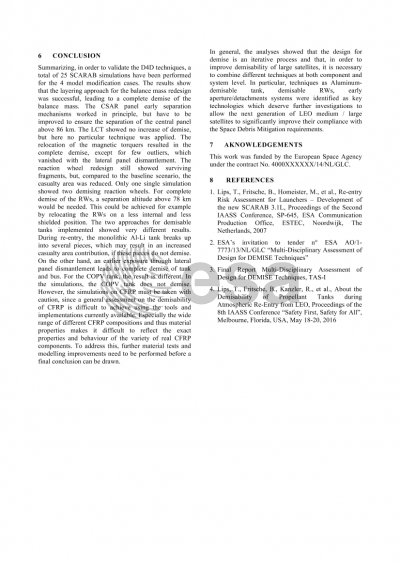Document details

Abstract
Design for Demise is the design of spacecraft systems and hardware to reduce the casualty risk on ground during re-entry events. Design for Demise is a key topic to support the compliance of future missions with the Space Debris Mitigation guidelines. The purpose of this paper is to present the investigations performed at system level in a series of studies and projects, focussing in particular on the ESA funded study "Multi-disciplinary assessment of Design for Demise techniques” (D4D) that aimed at identifying the most promising design for demise techniques and technologies, to derive guidelines and recommendations for future projects.
The first step of the study was the in depth analysis of the configuration of the selected study case, the ESA Earth Observation satellite Sentinel-1. Sentinel-1 is a two tons LEO spacecraft mounting a large Synthetic Aperture Radar (SAR) Antenna. A detailed model of the S/C was developed for the simulation of the re-entry and the evaluation of the casualty risk. The SCARAB tool (Spacecraft Atmospheric Re-Entry and Aerothermal Break-Up), developed by HTG, was used for the simulations. A total of 51 SCARAB simulations were performed and deeply analysed in order to identify the main critical components.
From the analysis of the simulations a categorization of components that survive the re-entry was derived, according to the reason of their survivability and behaviour during re-entry:
• Category 1: items break into smaller fragments (as, for instance, the Synthetic Aperture Radar);
• Category 2: items arrive in one single piece partially ablated or demise completely depending on initial mass and exposure to heat flux (as, for instance, the magnetorquers);
• Category 3: items arrive in one single piece partially ablated but with the current design are not expected to demise under any condition (as, for instance, the tank and the reaction wheels).
The D4D approach to improve the S/C demisability was derived directly from the critical items categorization: for the first two categories techniques that improve the exposure to the heat flux can lead to demise. For the third category of items, the survivability is mainly related to the materials characteristics and only a redesign of the critical items (e.g.: changing critical material, layering to reduce kinetic energy below 15 J, etc.) can improve its demisability.
A set of the most promising D4D techniques, combining component and system level approaches, was applied to the Sentinel-1 study case and four modified models were defined and modelled in SCARAB. The main D4D techniques investigated included the potential use of a monolithic Al-Li tank (instead of the Baseline Titanium tank), modified reaction wheels, with fly wheel made from Aluminium alloy, magnetic torquers relocated to a location most exposed to the aerothermal fluxes, mechanisms allowing the early aperture of the external panels of the S/C main body and mechanisms allowing an early detachment of the SAR antenna during the reentry. A total of 25 SCARAB additional simulations were performed, implementing these modifications to the original design. The high fidelity reentry simulations were supported by several sensitivity analysis performed with TADAP (Trajectory and Aerothermodynamic Debris Analysis Program), the 3DoF re-entry tool developed by TAS. The results were thoroughly analysed.
In general, the analyses showed that the design for demise is an iterative process and that, to improve demisability of large satellites, it is necessary to combine different techniques both at component and system level. The detailed results of the analyses will be reported in the paper, with indication of the most promising techniques, their advantages and drawbacks. In particular techniques as Aluminum-demisable tank, demisable RWs, early aperture/detachments systems were identified as key technologies which deserve further investigations to allow the next generation of LEO medium / large satellites to significantly improve their compliance with the Space Debris Mitigation requirements.
Preview
